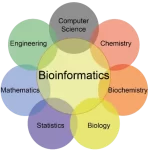
What Drives Personalized Medicine in Bioinformatics?
February 22, 2025Personalized medicine, powered by bioinformatics, is revolutionizing healthcare by tailoring treatments to individual genetic profiles. At the heart of this transformation is genomic sequencing, which deciphers an individual’s genetic blueprint to inform precise medical interventions. By integrating vast amounts of clinical and genetic data, bioinformatics tools can identify genetic variations that influence how patients respond to therapies. These advancements enable predictive modeling, linking clinical data with genetic markers to optimize treatment outcomes. However, the ethical implications of such precise interventions and the rapid evolution of the field raise important questions. What lies ahead for this personalized approach to medicine?
Key Takeaways
- Data Integration Techniques: Combining diverse datasets provides comprehensive insights for personalized treatments.
- Advanced Machine Learning: Algorithms predict treatment responses and identify genetic patterns.
- Genomic Sequencing: Identifies genetic variations affecting disease susceptibility and treatment efficacy.
- Bioinformatics Tools: Technologies like NGS and WGS enable accurate genetic variant analysis.
- Ethical Considerations: Informed consent and data privacy ensure responsible and equitable use of personalized medicine.
Role of Genomic Sequencing
Genomic sequencing is the cornerstone of personalized medicine, enabling the identification of individual genetic variations that influence treatment responses. By analyzing a patient’s unique genetic makeup, healthcare providers can tailor therapies to optimize outcomes. The balance between sequencing costs and sequencing accuracy is critical, as it determines the feasibility and reliability of genomic data in clinical applications.
Over the past decade, advancements in sequencing technologies have significantly reduced costs, making genomic sequencing more accessible. Lower costs facilitate comprehensive studies, including diverse populations, and allow for repeated sequencing to monitor disease progression and treatment efficacy. However, cost reductions must not compromise accuracy, as precise sequencing is essential to avoid misdiagnosis or inappropriate treatments.
Next-generation sequencing (NGS) platforms have enhanced accuracy while driving down costs, enabling the detection of rare genetic variants. This combination of affordability and precision makes genomic sequencing indispensable in advancing personalized medicine.
Data Integration Techniques
Integrating heterogeneous datasets—such as genomic, transcriptomic, proteomic, and metabolomic data—provides a holistic view of biological processes. Multi-omics approaches reveal intricate interactions that single-omics studies might miss, enhancing the understanding of disease mechanisms and treatment responses.
Data fusion techniques merge data from various omics layers, enabling the identification of biomarkers and disease pathways. Advanced computational algorithms, including machine learning and network analysis, extract meaningful patterns from integrated datasets, improving predictive models and their robustness.
In clinical applications, integrating multi-omics data with patient outcomes allows for the development of personalized treatment plans. Longitudinal data integration further supports dynamic and adaptive therapeutic strategies, ensuring treatments remain effective over time.
Bioinformatics Tools
Bioinformatics tools are essential for analyzing complex biological data and enabling personalized medicine. These tools employ advanced statistical methods and computational frameworks to extract insights from vast datasets.
Data Analysis Techniques
- Statistical Methods: Techniques like regression analysis and machine learning identify patterns and correlations.
- Computational Frameworks: High-performance systems and distributed computing platforms (e.g., Hadoop, Spark) manage and process large datasets efficiently.
- Visualization Tools: Heatmaps, scatter plots, and network graphs make complex data interpretable for clinical and research applications.
Genomic Sequencing Software
- Reduced Sequencing Costs: Increased accessibility to genomic data.
- Regular Software Updates: Enhanced accuracy and reliability through advanced algorithms.
- Advanced Algorithms: Faster analysis and diagnosis, improving clinical decision-making.
Genetic Variants Analysis
Analyzing genetic variants is crucial for understanding individual responses to treatments. Key considerations include:
- Variant Frequency: High-frequency variants reveal population trends, while rare variants explain unique patient responses.
- Mutation Hotspots: Regions with high mutation rates are critical for understanding phenotypic outcomes.
- Bioinformatics Tools: NGS and WGS, combined with databases like dbSNP and ClinVar, identify and annotate clinically significant variants.
This systematic approach ensures reliable and actionable insights, enabling the development of personalized treatment plans.
Predictive Modeling
Predictive modeling leverages data integration and machine learning to forecast treatment outcomes.
Data Integration Techniques
- Data Harmonization: Merging diverse datasets (e.g., clinical records, genomic data) ensures consistency.
- Integration Challenges: Addressing varying formats, scales, and quality of data is essential for robust analysis.
Machine Learning Algorithms
- Ensemble Methods: Combining multiple models improves predictive performance.
- Feature Selection: Identifying relevant variables enhances computational efficiency and model interpretability.
Genomic Data Analysis
Predictive models identify genetic markers associated with diseases, enabling precise and individualized medical interventions.
Clinical Data Correlation
Linking clinical data with genomic information enhances personalized medicine. Key factors include:
- Patient Demographics: Age, gender, and ethnicity influence disease progression and treatment responses.
- Electronic Health Records (EHRs): Provide detailed clinical data for analysis.
- Outcome Data: Refines treatment strategies by identifying predictors of success or failure.
- Advanced Algorithms: Integrate and analyze diverse data types for precise predictions.
Patient-Specific Therapies
Tailoring treatments to individual genetic and molecular profiles improves therapeutic outcomes. Key aspects include:
- Patient Demographics: Influence genetic variations and treatment responses.
- Molecular Targeting: Identifying mutations (e.g., BRCA1/2) enables precise therapies.
- Real-Time Monitoring: Adjusting treatments based on patient responses ensures continued efficacy.
Ethical Considerations
Personalized medicine raises ethical issues that must be addressed:
- Patient Consent: Ensuring informed decisions about data use.
- Data Privacy: Protecting sensitive genetic information from misuse.
- Equitable Access: Preventing disparities in access to advanced treatments.
- Bias and Discrimination: Ensuring algorithms and datasets are free from biases.
Future Trends
Emerging trends in personalized medicine include:
- AI Advancements: Enhancing predictive modeling and treatment personalization.
- Computational Biology: Analyzing complex datasets for deeper insights.
- Data Integration: Unifying diverse data sources for comprehensive analysis.
- Cloud Computing and Blockchain: Improving data security and accessibility.
Conclusion
Personalized medicine, driven by bioinformatics, is transforming healthcare by tailoring treatments to individual genetic profiles. Genomic sequencing, data integration, and predictive modeling are key to this revolution. As ethical considerations guide its evolution, the future promises even greater advancements, reshaping medical treatments to be as unique as each individual’s genetic code.


















